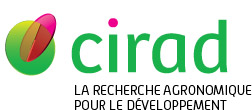Ruf François. 2015. La fertilisation des cacaoyères en Côte d'Ivoire, 35 ans d'innovations villageoises. Agronomie, Environnement et Sociétés, 5 (2) : 65-74.
|
Version publiée
- Français
Utilisation soumise à autorisation de l'auteur ou du Cirad. AES_vol5_n2_11_Ruf.pdf Télécharger (1MB) | Prévisualisation |
Résumé : En Côte d'Ivoire, les planteurs de cacao découvrent l'engrais vers 1985 et la fiente de poulet vers 2000. Cet article explique pourquoi les adoptions de fertilisants sont tardives, en quoi elles constituent de véritables innovations. La méthode repose sur la reconstitution de l'histoire de l'innovation de 1979 à 2015, s'appuyant sur plusieurs enquêtes ponctuelles et un observatoire permanent des exploitations cacaoyères. La non-adoption de l'engrais jusqu'en 1980/90 s'explique par les faibles coûts d'accès à la terre et à la forêt. L'engrais n'a alors aucun intérêt. Les débuts de l'adoption de l'engrais cacao relèvent d'une innovation " boserupienne " : l'engrais est un " médicament " pour sauver les plantations vieillis-santes. Puis les achats d'engrais s'effondrent avec la chute du prix du cacao et le doublement du prix de l'engrais. La montée en puissance des migrants d'origine burkinabé joue également un rôle. Pour les mêmes raisons, les planteurs innovent vers des fumures ani-males. En 2015, la hausse du prix du cacao fait progres-ser les deux fertilisants mais la fiente de poulet annonce une transition écologique et sociale irréversible.
Résumé (autre langue) : Cocoa farmers in Côte d'Ivoire discovered the benefits of mineral fertilizer only around 1985 and of organic manure, especially chicken manure, some fifteen years later still. This article aims to explain why it took so long for mineral fertilizers and organic manure to be adopted and how they represent true innovations in a context of chaotic markets and deforestation. The method relies on reconstructing the history of the innovation from 1979 to 2015, based on several ad hoc surveys and a permanent observatory. The lack of fertilizer adoption before the 1980s and 1990s can be explained by the low costs of access to land. Fertilizer held no interest for the cocoa farmers at that time. Their strategy was instead oriented towards gaining access to new and fertile forest land and clearing it to grow cocoa. The beginning of the adoption of fertilizer for cocoa cultivation despite unfavourable prices was a 'Boserupian' innovation: fertilizer was no longer a 'luxury' but essential 'medicine' to save aging plantations. Soon thereafter prices became still more unfavourable. Fertilizer purchases collapsed under the dual effect of a fall in cocoa prices and the doubling of fertilizer prices. The increasing weight of Burkinabé migrants also plays a role. For the same rea-sons, farmers innovated by shifting to using animal manure. In 2015, the rise in cocoa prices is leading to an increase in the use of both forms of fertilization. The adoption of chicken manure for cocoa cultivation may well herald an irreversible ecological transition but it also represents a significant social innovation.
Mots-clés Agrovoc : Theobroma cacao, fertilisation, adoption de l'innovation, innovation, histoire, analyse économique, analyse coût avantage, fiente de volailles, engrais, groupe éthnique, comportement humain
Mots-clés géographiques Agrovoc : Côte d'Ivoire, Burkina Faso
Classification Agris : F04 - Fertilisation
E14 - Économie et politique du développement
Champ stratégique Cirad : Axe 1 (2014-2018) - Agriculture écologiquement intensive
Auteurs et affiliations
-
Ruf François, CIRAD-ES-UMR INNOVATION (FRA)
 ORCID: 0000-0003-4508-1185
ORCID: 0000-0003-4508-1185
Source : Cirad-Agritrop (https://agritrop.cirad.fr/581983/)
[ Page générée et mise en cache le 2024-01-28 ]




